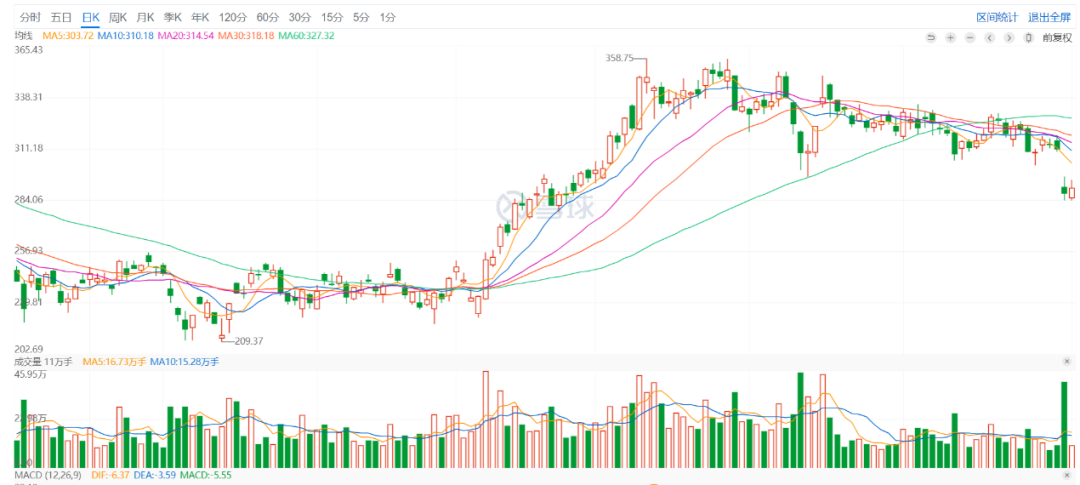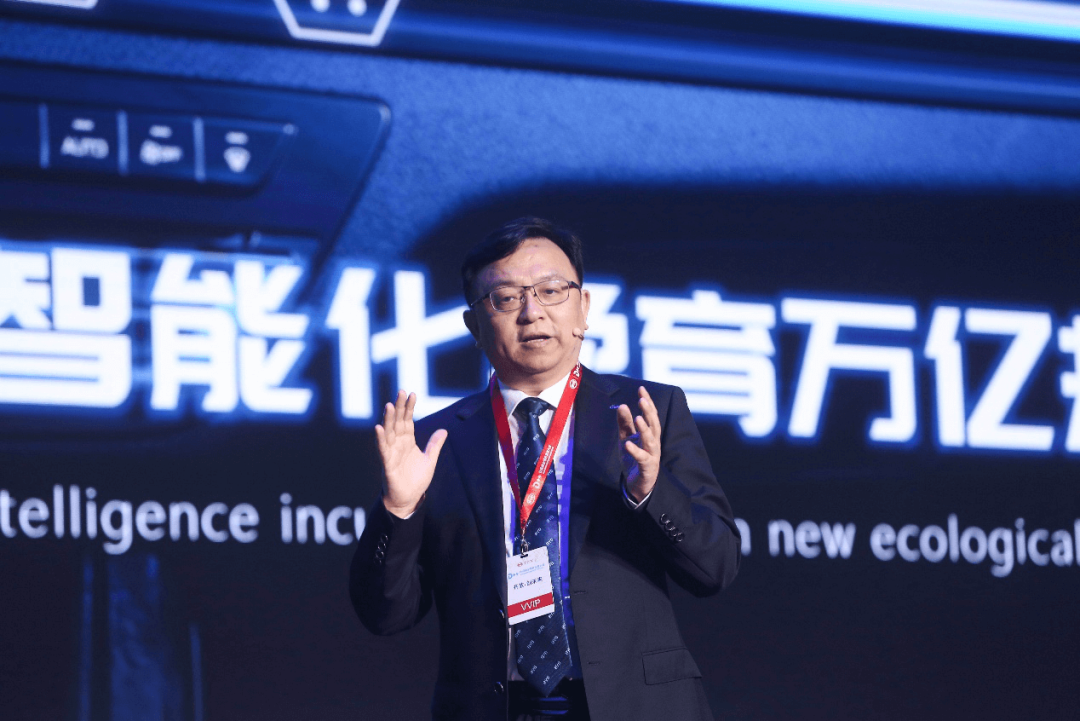Article | Financial Street Laoli
In recent days, news of “Buffett’s first reduction of BYD’s stock” has attracted widespread attention, and BYD responded by saying “there is no need for excessive interpretation.” Many institutional analysts also pointed out that as a “leader” in new energy vehicles, BYD’s prospects are promising and should not be overly concerned about shareholder reductions. Laoli believes that Buffett’s reduction may affect market sentiment in the short term, but ultimately the company’s prospects depend on performance.
Let’s look back at BYD’s interim report released a few days ago. Despite the unfavorable secondary market environment, BYD’s interim report still attracted a lot of attention from investors. Due to long-term and extensive research on BYD, investors had relatively high expectations, so while the interim report looks impressive, it’s still within institutional investors’ expectations.
The report shows that BYD’s revenue in the first half of 2022 was as high as 150.6 billion yuan, a year-on-year increase of 65.71%, and the non-GAAP net profit reached 3.029 billion yuan, a year-on-year increase of 721.72%. In Laoli’s opinion, this number is extremely impressive and full of imagination.
In fact, at different stages of the development of the new energy vehicle industry, the market’s perception of BYD differs, and financial reports are the best proof of a company’s market position. Today, Laoli will discuss with you from the perspective of the financial report what kind of connotations are behind BYD’s interim report, what is the market value password, and how to become the market value leader of A shares.
The connotations behind the interim report numbers
BYD’s interim report hides a lot of secrets, with high expectations for its annual report.
As early as July, BYD released an interim report forecast: the first half of the year’s net profit attributed to shareholders of the listed company is expected to be between 2.8 billion and 3.6 billion yuan, a year-on-year increase of 138.59%-206.76%; after deducting non-recurring gains and losses, the net profit is expected to be between 2.5 billion and 3.3 billion yuan, a year-on-year increase of 578.11%-795.11%.

After the interim report was officially released, investors in the secondary market were saying that BYD released an interim report that was consistent with the highest value forecasted earlier. Laoli and everyone will break down the various indicators of the interim report:
First, sales volume is the lifeblood of all enterprises, and BYD is capturing it. BYD sold 646,000 vehicles in the first half of the year, with sales in each month this year almost showing a month-on-month upward trend. The monthly sales figures broke through 100,000 units for the fourth consecutive month, and sales in June even reached 134,000 units, almost all of which were new energy vehicles.
Based on sales trends over the past three years in each quarter, BYD is expected to exceed 1.2 million vehicles in annual sales, achieving the same scale as Tesla, Geely, and Great Wall, which is a significant breakthrough, as last year BYD’s annual sales were only 600,000 units.Secondly, high sales drive high revenue, and the importance of the automotive sector is gradually increasing. According to the interim report, the operating income in the first half of 2022 (150.6 billion yuan) has reached almost the same level as the annual revenue in 2020 (156.6 billion yuan), which is 70% of the revenue in 2021 (216.1 billion yuan).
The revenue of the automotive sector specifically has reached up to 109.267 billion yuan, showing an increase of 130.31% year-on-year, and the revenue ratio has grown from 52.20% to 72.55%, indicating that the automotive sector has become the most important and fastest growing one.
It is estimated that the annual revenue of BYD can reach 400-450 billion yuan, roughly three times that of the same period last year, based on the quarterly revenue projection.
Thirdly, there is the extraordinarily high corporate profit. People have always said that the automobile industry is not profitable, but Tesla has changed this fact. Now, it is believed that BYD can also change this perception. From the perspective of profits, BYD does have unique advantages.
Looking directly at the net profit attributable to shareholders, BYD’s net profit reached 800 million yuan in Q1, and after increase in Q2 is expected to reach almost 2.8 billion yuan. Linearly calculating, the net profit attributable to shareholders in the second half of the year will be at least 6 billion yuan.
With the acceleration of the scale in the third and fourth quarters, the growth rate of BYD’s non-profit net profit will be even faster. It is not difficult for Mr. Li to predict that the net profit attributable to shareholders for the second half of the year can easily reach 5 billion yuan. Considering all factors, the annual net profit attributable to shareholders of BYD is expected to reach between 8-10 billion yuan. By comparing the financial reports of Great Wall and Geely, it is clear who is more important.
In addition, several important indicators in the first half of the year are vital for the valuation of BYD:
Firstly, order volume. Although the supply of BYD models in the market is indeed short, the exact number of undelivered cars is unknown. However, BYD announced that the number of orders in hand has exceeded 500,000, which lays the foundation for sales volume.
Secondly, the increase in production capacity. The production capacity of BYD was only 600,000 vehicles last year. By the end of Q1 2022, the production capacity reached 1.2 million vehicles, and it is expected to reach 2.2 million vehicles by the end of this year. With the guarantee of production capacity, the delivery volume will increase.
Thirdly, cash flow of up to 43.2 billion yuan. According to Mr. Li’s experience, few car companies in China of the same size can achieve a cash flow of 40 billion yuan in half a year. This cash flow means that BYD can carry out any project or investment. In a weak economic environment, this is a solid foundation.
Where is the market value password?Although BYD released its financial report, its performance in the secondary market on that day was not good. However, not only BYD, but also most companies did not have a good performance in the market even if they released better-than-expected interim reports. This is mainly because the current market is still in a wait-and-see period, with various favorable and unfavorable messages from internal and external sources fluctuating, and the industrial and capital markets are not positively correlated.
Recently, there have been some doubts in the secondary market about growth stocks including BYD and CATL. The reasons for concern are mainly as follows:
First, since the reversal on April 27, the stock prices of growth stocks have risen too much and are at a high level. People not only don’t chase after the highs, but also have the idea of selling off.
Second, the market value of growth stocks is not proportional to their performance, and people think that the market has given growth stocks too high a valuation.
Third, many people believe that the market changes of growth stocks are too fast, and the fluctuation of the secondary market will continue to increase as the industry changes.
Regarding the first point, I won’t explain it in detail. It is basically a problem of the secondary market and has nothing to do with the fundamentals of the enterprise. I mainly want to talk with you about the last two points, which can actually be condensed into one question-what is BYD’s valuation code?
In the past, I mentioned that CATL’s valuation code is “high growth rate and high market share”. As long as these two indicators look good for CATL, its market value will not fluctuate.
I think BYD’s valuation code is “size and single-car average selling price (ASP)”.
The so-called “size” is essentially sales volume. So far, there has been no giant enterprise in the new energy vehicle industry. In the past, everyone thought that Tesla was the leading enterprise, but after three years of development, it was discovered that Tesla’s single product line could not exceed the million-level volume. Especially as the market competition becomes more intense in the future, relying on the current few products can not achieve the million-scale in the Chinese market. The highest volume of single car for the Haval H6 and the Volkswagen Lavida series, which were once popular, was only more than 500,000 units.
In comparison, the sales volume is always an insurmountable gap for BYD. Geely and Great Wall achieved great development after their annual sales volume broke through 1 million vehicles. After the two companies entered the 1 million volume level, they also entered a bottleneck period of development.
BYD has been hovering in the annual sales of 500,000 units for a long time, and it will probably achieve its goal of 1 million units this year.
Compared with the traditional car companies with a 1 million volume such as Geely and Great Wall, the advantage of BYD is that most of the 1 million volume is new energy vehicles, which means that the market will price BYD according to the rules of new energy vehicle companies.Compared to Tesla’s 1 million units, BYD’s advantage lies in the high elasticity created by the supply side. After all, BYD’s crazy sales of 640,000 units in the first half of the year was nearly 80,000 units more than Tesla. With a very diverse product line, BYD is unlikely to stay in the 1-2 million range for too long, and the market is likely to push BYD into the 2 million unit range.
Understanding ASP per unit is easier than understanding scale. The higher the ASP per unit, the higher the sales, the better the corporate revenue, and the higher the market value of Tesla depends on the two key indicators of high ASP per unit and high sales.
BYD’s ASP per unit is continually increasing, and the current ASP per unit is already around CNY 180,000. Last year, the ASP per unit was only about CNY 150,000, while Great Wall Motor’s was around CNY 100,000 and Geely’s was less than CNY 90,000. With the introduction of high-end models, BYD’s ASP per unit is expected to increase substantially.
These two points reflect the long-term valuation.
Leading the way with our mission
The development of any iterative industry will have three driving forces. First, new technologies, new products, and new services lead industry changes. Second, “three-new” companies emerge and drive the penetration rate to break through 10%, achieving development from 0 to 1. Third, industry concentration continues to increase and give rise to industry giants. The development of electric vehicles also follows this law. Currently, we are at a stage of crossing from the second to the third driving force.
Compared to traditional fuel vehicles, electric vehicles still have significant differences. In the era of fuel vehicles, market share mainly depended on product sales. New-energy vehicles also need to consider new business revenue growth points such as software and services, but software and services are beyond the scope of revenue generation, at least not for the next three to five years.
After experiencing a major reshuffle, the pattern in the new-energy vehicle market is already becoming clearer. Tesla and BYD are far ahead, and companies such as WEY, GAC Aion, etc. have a long way to go to reach a million unit scale, while Xiaomi and Huawei, although highly anticipated, it is still unknown whether they can reach the million-unit level.
What can be confirmed now is that BYD has become the company with the highest market share in the new energy vehicle field in the new round of competition, and this position can be maintained for at least 3-5 years.
This process is not achieved overnight. In 2021, the top three global new energy vehicle (NEV) sales companies were Tesla, BYD, and SAIC-GM-Wuling, with a market share of only 14.4%, 9.1%, and 7.0% respectively. As you can see, this is a relatively fragmented industry. In fact, the concentration of the traditional fuel vehicle industry is even lower. In 2021, the market shares of the top three global traditional fuel vehicle sales companies Toyota, Volkswagen, and Hyundai were only 13%, 11%, and 8%, respectively.
The market share of NEVs has undergone significant changes this year. With the increase in BYD sales, the NEV industry is giving birth to leading companies. Taking BYD as an example, its sales in the first half of 2022 exceeded 640,000 units, while the overall domestic NEV sales in the first half of the year were only 2.6 million units. BYD’s market share is close to 25% and still showing an upward trend, which is a historic breakthrough.
In fact, market share equals valuation in any industry, which is why leading companies always have a strong voice in the A-share market. In their respective fields, Huawei, Meituan, and Tencent are all monopoly-level entities. CATL has a market share of 50% in the lithium-ion battery industry, and LONGi’s market share in the photovoltaic industry is around 30%. BYD’s future market share is no less than these companies.
From the perspective of the industry, BYD has just entered the period of performance explosion. Its future growth rate will further increase. If the full-year profit reaches 8-10 billion yuan, the market valuation of BYD will be further revised upwards.
Mr. Li believes that the explosion of BYD’s performance year is next year. If all the production capacity for 2022 is realized, sales next year may exceed 2 million units, auto revenue may exceed 500 billion yuan, and net profit may exceed 30 billion yuan. How big is this scale? It’s like Huawei in the automotive industry.
At that time, BYD will evolve from the leading company in the A-share automotive sector to the leading company in the entire A-share market.

This article is a translation by ChatGPT of a Chinese report from 42HOW. If you have any questions about it, please email bd@42how.com.
